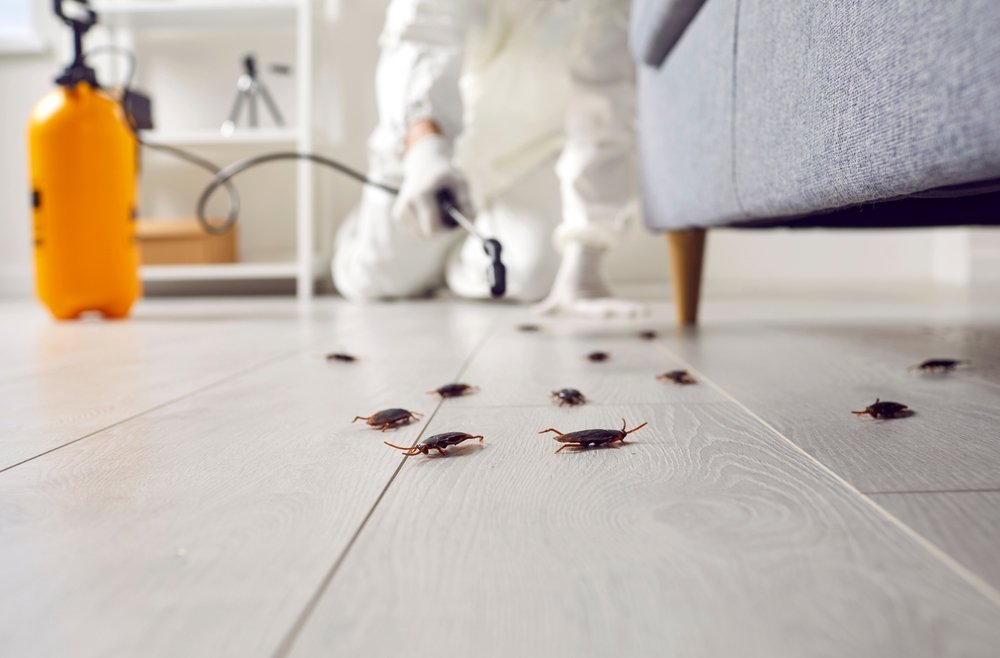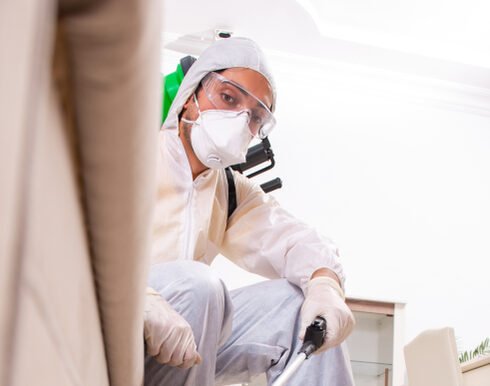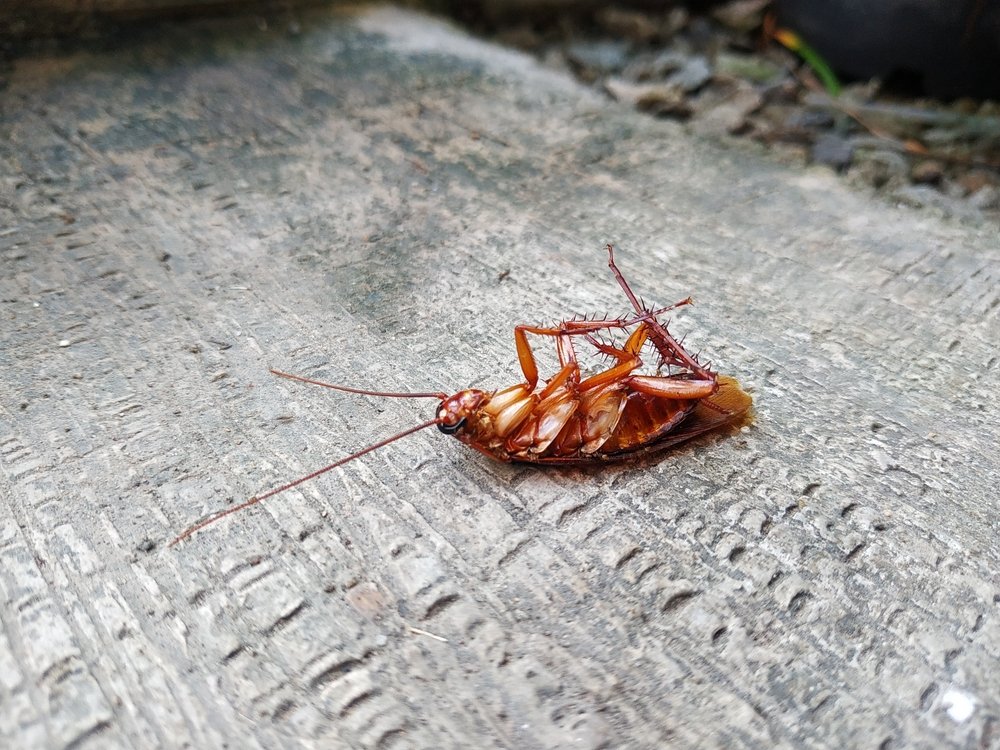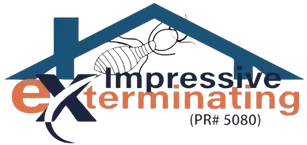The Basics of Pest Control

Pest control traps technicians conduct thorough home and property inspections in order to identify problem areas, and offer recommendations for exclusion services and point of entry identification. Integrative Pest Management (IPM) strategies combine hygiene, repair, monitoring, trapping and baiting as well as reduced-risk pesticide applications to effectively keep unwanted pests at bay in both your home and yard. A Comprehensive Guide to Termites in California Protecting a home from termites begins with identification. A trained termite identification specialist from Impressive Exterminating pest control will conduct a comprehensive inspection, checking crawl spaces, attics, and basements before providing advice about treatments such as Altriset and Termidor soil injections or filling trenches that have been dug along foundations with water. Additional indicators that termite infestation exists are damaged wood, hollow sounding timbers and wings of flying ants that have fallen to the floor. Subterranean termites also build mud tubes into homes to escape their natural environment and gain access to food sources; these may be seen through foundation cracks or around raised foundation homes’ pillar posts. Termites can be seen swarming throughout the year, with peak activity coming during autumn. To protect homes against future termite invasion, preventive termite protection requires treating perimeter of home with non-repellent termiticide that eliminates existing infestations while simultaneously guarding against future ones. Major League Pest uses non-repellent termiticide for its termite protection services. Identification If you need pest control services, take some time to do research on local providers. Look for companies with an in-depth knowledge of the specific pests you’re facing as well as responsible practices in treating them. When searching for local providers, get recommendations from friends, neighbors or the Better Business Bureau if available. Find licensees using the Department of Consumer Affairs’ online search tool. Filter results based on first and last name, business name, license type or number; even narrow your search to Structural Pest Control Board licensees! Ask potential providers about their methods and approach, as well as how they would treat your specific problem. Be sure to gain an understanding of exactly what will take place prior to beginning any work so that you’re confident the company is taking steps in the best interest of both your home and property. Furthermore, inquire into their business structure. There are three choices – sole proprietorship, partnership and corporation; all have advantages and disadvantages that you should be aware of before deciding. Prevention Many pest control companies offer preventative maintenance services, including monitoring devices and sealing entry points, both during construction (pre-construction treatment) and afterwards (“post-construction”). Landlords can take steps to mitigate pest infestation in rental properties by keeping garbage away from buildings, eliminating places where mosquitoes breed, caulking around doors and windows regularly and regularly caulking the gaps around doors and windows. Pesticides may be necessary in some instances to eliminate pests; these products should be used sparingly and combined with other methods in order to successfully address a particular pest issue. Pest control firms that implement an integrated Pest Management (IPM) strategy can dramatically decrease or even eliminate their need for chemical pesticides altogether. Content that addresses common pest questions increases visitor relevance and SEO effectiveness, while creating video to explain prevention strategies can create trust with visitors and position the business as a reliable resource. Updating blog posts frequently can also boost SEO effectiveness as search engines tend to favor websites with frequent content updates. Treatment After conducting a thorough inspection, your pest management professional may suggest treatments to rid your property of specific pests. Be sure to ask about their methods so that you are satisfied with the service provided. Integrative Pest Management (IPM) practices seek to decrease infestation through hygiene measures, pest control traps, baiting, and reduced-risk pesticide applications. Ask your pest control company if they follow this approach when handling pest infestations. Some IPM techniques include sealing gaps around doors and windows to deter pests from entering. Landlords should also consider investing in high-quality caulking to seal up holes in walls and ceilings, and use pest control traps to catch intruders. Additionally, removing standing water from outdoor areas is essential to limit mosquito breeding sites. Commercial pest control services are vital to businesses in preserving their brand, customer trust, and employee safety. Termites cause costly damage to buildings and equipment, while rodents, cockroaches, flies, bed bugs, and wasps can spread disease and inhibit production and shipping operations. Utilizing pest control traps alongside other preventive measures is essential for addressing infestations efficiently and ensuring business continuity.
Effective Pest Control Methods

Effective pest control techniques can protect plants against insects that cause damage. Pruning overcrowded plants or thinned planting can reduce diseases. Physical pest control uses traps and barriers to repel or kill pests without using harmful chemicals. If used effectively, physical control methods may be quite successful, though usually only when monitoring, identification and action thresholds indicate less-risky controls are failing. Physical Control Physical pest control uses traps and other devices to catch or kill pests. Physical barriers or “pest proofing” premises are other physical methods used for controlling pests; these methods may prove more effective than chemical solutions while helping reduce chemical waste. Repellents, which work by interfering with pests’ senses of smell, taste and touch to deter pests from coming indoors are another effective means of physical pest control. While repellents may work temporarily to deter insects, longer use may pose health risks to humans and animals if inhaled or consumed directly. Chemical pesticides are synthetic substances designed to kill or repel pests. While they are often highly toxic and should be applied by a qualified pest control technician, repeated use may lead to resistance developing among insects as well as environmental pollution; so these substances should only be employed sparingly and only when other methods have failed. Chemical Control Chemicals are an umbrella category of substances designed to kill or repel pests. Algicides control algae growth in lakes, canals, swimming pools and water tanks while antifoulants prevent barnacles from attaching themselves to boats. Fungicides kill mildews and molds while herbicides kill unwanted weeds; insect growth regulators alter insect molting, maturation from egg to adult or other life cycle events; repellents prevent future insect and rodent pest infestation. All pesticides are classified by their level of toxicity, which is determined by administering dosages of their active ingredients to test animals and observing any disruption of regular bodily functions. Persistence also plays an integral part in this assessment – how long it remains in the environment after application and how weathering and other natural processes impact it over time. Biological Control Biological Control (sometimes referred to as biocontrol) refers to the use of living organisms which predate or parasitize pest insects, mites, nematodes or weeds for use in agriculture, aquaculture, forest management, natural resource and stored product management systems. As part of an Integrated Pest Management (IPM) program it uses time honored techniques such as importation, augmentation and conservation approaches in order to lessen pest impacts on crop production. Agriculture pests from other countries or regions often arrive without the natural enemies that would normally keep them under control. Through importation biological control, natural enemies from their country or region of origin are taken and inoculated into new environments where viable populations can establish themselves to suppress the pest over time. Biological control products like Trichogramma wasps that parasitize moth eggs are widely available commercially to combat an array of invertebrate pests, vertebrates and weeds (van Lenteren 1993a; 2000b). Augmentative biological control involves periodic introductions of natural enemies into an ecosystem to break apart pest-natural enemy complexes; for instance releasing Trichogramma egg parasitoids against lepidopteran pests is one example of augmentative biological control. Sterilization Sterilization uses high-level disinfectants such as glutaraldehyde, ortho-phthalaldehyde (OPA), and hydrogen peroxide to kill germs and pests. Examples of such agents are glutaraldehyde, OPA and hydrogen peroxide. Sterilizing is an effective means of disinfecting food preparation and serving environments, particularly restaurants and retail establishments where hygiene is critical. Unfortunately, however, it cannot remove most pests that have established themselves within a home environment where infestation has reached full-blown status. When employing chemical methods to combat pests, it is imperative that professional services like Impressive Exterminating use safety guidelines and adhere to them strictly. Furthermore, it may be worthwhile seeking advice from specialists such as entomologists, public health officials, or customers who have used your services before making decisions on pest prevention measures themselves. Finally, share helpful prevention tips via blog posts or videos in your blog to empower readers to tackle minor pest problems while reminding them when it’s time to call in experts.
Common Pests in California

Pest Control Service Finding the Right Pest Control Service If you have an infestation problem, hiring a certified pest control technician is likely your best bet. When searching for solutions, using terms like “pest controllers near me” can help you find local professionals. Look for companies offering integrated pest management (IPM). IPM practices involve taking preventative and corrective steps to keep pests away, including using hygiene and repair measures, monitoring, trapping, baiting, and reduced-risk pesticide applications to keep out pests. They also aim to stop rodents carrying fleas or ticks that spread disease among people and animals alike. Residential Pest Control Pest infestations can quickly make any building unlivable. Landlords must ensure their properties remain habitable for tenants to live comfortably, but tenants also play a vital role in pest prevention efforts. Here are some helpful tips for this: Impressive Exterminating Pest Control provides preventive spray treatments in Los Angeles County & Orange County to keep pests at bay. Their team of professional technicians utilizes barrier treatments and other services to provide comprehensive defense from ants, termites, fleas, bed bugs, and rodents alike. Impressive Exterminating Pest Control, a family-owned and operated business in Los Angeles County & Orange County, provides residential and commercial customers with spot treatments, wood repairs, full-house fumigations, and termite inspections to meet escrow requirements. Their services are child and pet-friendly. Bye Bye Bed Bugs use heat technology to remove bed bugs from homes throughout Los Angeles County & Orange County – visit their website for more details! Commercial Pest Control No matter if you own or rent, pests are never welcome guests on any property. Rodents in particular carry diseases like leptospirosis, streptococcus, salmonella, and hepatitis B that pose significant health threats, while they also chew through wires, insulation, and other materials which create fire hazards. Commercial pest control services in California are essential for businesses, as they help safeguard both the reputation of a company as well as employees’ and customers’ health and safety. Furthermore, many industries must meet stringent health codes that must pass regular inspections. An infestation can wreak havoc on any business and waste valuable time, money and customer trust. Rodents and termites can require costly repairs; while cockroaches, flies and bed bugs spread disease to hinder production and shipping operations – with wasps, bees, and scorpions posing potential safety threats to employee and customer alike. Preventing Pest Infestations As part of an effective pest-prevention strategy, both homes and businesses must stay clean and sanitary. This includes regularly cleaning and sanitizing food preparation areas, equipment, and storage rooms as well as emptying trash bins frequently and storing food in airtight containers. Furthermore, make sure that leaky pipes and drains are repaired as soon as they become noticeable. Last, be sure to seal any cracks or gaps where pests might enter your property, from crevices in walls, doors and windows to any utility lines that enter and leave. Caulking can help cover these openings as well. If pests have established themselves in your home, the best course of action is to contact reliable pest controllers near me. The most successful ones offer superior customer service and provide environmentally friendly treatments; their plans also cover various pest problems effectively. Getting Rid of Pests If pests have established themselves in your home, the best course of action is to contact reliable pest controllers near me. The most successful ones offer superior customer service and provide environmentally friendly treatments; their plans also cover various pest problems effectively. Additionally, their technicians are well-versed in the habits and life cycles of different pests to provide accurate identification and the effective treatments that your property requires. To protect your home from pests, ensure kitchen areas are kept clean and store food in airtight containers. Furthermore, try not to accumulate newspapers and magazines around your home as these may provide shelter and food sources for pests. Finally, seal off overflowing drains or sinks so they cannot access water sources and seal any cracks or crevices along the perimeter of your property that allow entry for pests into your home—this will reduce how much work there will be to do to eliminate them! If you notice persistent pest issues, searching for pest controllers near me can help you find local professionals to address the problem effectively.
How To Control Termites: Termite Treatment

Termites can be a homeowner’s worst nightmare, causing extensive damage to your property if left unchecked. Fortunately, with the right termite treatment, you can effectively control termites and protect your home from these destructive pests. In this blog post, we’ll explore what termite treatment is, why it’s crucial, and how you can go about implementing termite treatments to safeguard your investment. What is Termite Treatment? Termite treatment refers to a set of proactive measures and methods employed to control termites in and around your property. These treatments are essential because termites are notorious for their ability to silently and invisibly devour wooden structures, causing costly damage. Without proper termite control, your home could become vulnerable to structural issues, compromising its safety and value. Why is Termite Treatment Necessary? Prevention of Structural Damage: Termites feed on cellulose-based materials, including wood, paper, and even insulation. Over time, their relentless feeding can weaken the structural integrity of your home, leading to sagging floors, warped walls, and even collapse in severe cases. Termite treatment is crucial to prevent this structural damage. Protecting Your Investment: For most people, their home is their most significant investment. By investing in termite treatments, you ensure the longevity and value of your property, making it a smart financial decision. Health and Safety: Termite infestations can compromise the health and safety of your household. Some termite species produce allergenic particles that can exacerbate respiratory problems. Moreover, weakened structures can pose physical risks to occupants. How to Control Termites Termite Treatments There are various termite treatments available, and the best approach depends on the severity of the infestation, your budget, and your preferences. Here are some common termite treatment methods: 1. Chemical Treatments Liquid Termiticides: These are applied to the soil around the foundation or directly into termite galleries in the wood. Baiting Systems: Termite baits are strategically placed to attract and poison termites, eliminating the colony. Barrier Treatments: A chemical barrier is applied around your home’s perimeter to deter termites from entering. 2. Physical Barriers Installing termite-resistant materials during construction. Implementing physical barriers like metal screens to block termite entry points. 3. Biological Controls Introducing natural predators or parasites that feed on termites. 4. Regular Inspections Scheduled inspections by pest control professionals (like us!) can detect termites early, allowing for timely intervention. Conclusion Termite treatment is a critical aspect of homeownership that should not be overlooked. By understanding what termite treatment is, why it’s necessary, and how to implement various termites treatments, you can take proactive steps to protect your home from these destructive pests. Regular inspections and preventative measures can go a long way in ensuring the long-term health, safety, and value of your property. Don’t wait until termites take control – take action NOW to control termites before they control you!
How To Do It Yourself Pest Control: Cockroach Infestation

“Cockroaches, those resilient and adaptable insects, can become a homeowner’s worst nightmare, especially during a cockroach infestation. These unwelcome guests not only create a sense of unease but also pose significant health risks and property damage. If you’re dealing with a cockroach infestation, you’re not alone, and there’s hope. In this guide, we’ll show you how to take matters into your own hands and perform effective DIY pest control to regain control of your home.” Understanding the Cockroach Problem Understanding the Cockroach Problem is the first step in successful DIY pest control. When it comes to ensuring a pest-free home, understanding the signs of a cockroach problem is crucial. Let’s explore three key findings that signify the need for professional pest control: Visible Cockroaches: The most apparent indicator of a cockroach infestation is the presence of live cockroaches in your home. If you frequently spot these pests scurrying about, especially during daylight hours, it’s a clear signal that you require effective pest control intervention. Fecal Matter and Droppings: Another unmistakable sign of a cockroach issue is the discovery of their droppings. These tiny, dark pellets, often resembling black pepper, can be found in areas frequented by cockroaches. Pest control experts can identify the extent of the infestation and take necessary action. Unpleasant Odor: Cockroaches emit a musty and unpleasant odor. If you detect an enduring foul smell in your living spaces that cannot be attributed to other sources, it could be related to a cockroach infestation. In such cases, professional pest control is essential to eliminate the root cause of the odor and the infestation itself. How To Do it Your Self Pest Control When faced with a cockroach infestation, taking immediate action with DIY pest control methods can help you regain control of your home while waiting for professional pest control assistance. Let’s explore some temporary pest control treatments you can implement to combat cockroaches effectively. Identify and Block Pest Control Entry Points: Begin your DIY pest control efforts by identifying and sealing any potential entry points where cockroaches may be getting into your home. Use caulk to seal cracks and crevices around windows, doors, and plumbing pipes. This step is crucial for preventing further infestations. Maintain a Clean Environment for Pest Control: Cockroaches are attracted to food and water sources, so maintaining a clean and dry environment is essential for effective pest control. Regularly clean up crumbs, spills, and food debris. Fix any leaky faucets to reduce water sources that attract cockroaches. DIY Cockroach Traps for Pest Control: Create DIY pest control traps by placing a mixture of water and dish soap in shallow containers. Cockroaches will be attracted to the bait and drown in the soapy water. Position these traps in areas with high pest control activity, such as under sinks and behind appliances. Pest Control Tips for Long-Term Success While do it yourself pest control methods can offer temporary relief from cockroach infestations, it’s equally important to implement strategies for long-term success in keeping these unwanted pests away from your home. By combining ongoing vigilance with effective pest control measures, you can maintain a pest-free environment and avoid future infestations. Here’s how: Seal Entry Points with Pest Control Measures: To prevent cockroaches from re-entering your home, continue to inspect and seal potential entry points. Use pest control caulk to close cracks and crevices around windows, doors, and plumbing pipes. Regularly check for new openings and address them promptly. Sustain a Pest Control-Friendly Environment: Cockroaches are drawn to food and moisture sources, making a clean and dry environment crucial for ongoing pest control. Consistently practice good hygiene by cleaning up food crumbs, spills, and debris. Wipe down countertops and floors regularly to eliminate food residue that might attract cockroaches. Fix Leaky Fixtures as Part of Pest Control: Leaky faucets and pipes can provide cockroaches with a water source, so make it a priority to fix any plumbing issues promptly. Pest control experts recommend addressing these leaks to reduce the attractants that cockroaches seek. Regular Pest Control Monitoring: Continue using DIY cockroach traps as a monitoring tool even after the infestation has been controlled. By placing these traps in areas prone to cockroach activity, you can detect any resurgence early and take appropriate pest control measures. Home Pest Control Products: Consider using long-lasting pest control products, such as cockroach baits and sprays, to create a protective barrier around your home’s perimeter. These products can serve as an additional line of defense in deterring cockroaches from entering. Conclusion Don’t let a cockroach problem compromise your comfort and health. When you notice visible cockroaches, fecal matter, or an unpleasant odor, it’s time to reach out to the Impressive Exterminating Pest Control Service. By addressing these key findings promptly, you can regain control of your home and enjoy a pest-free living environment with the help of our expert pest control solutions.

